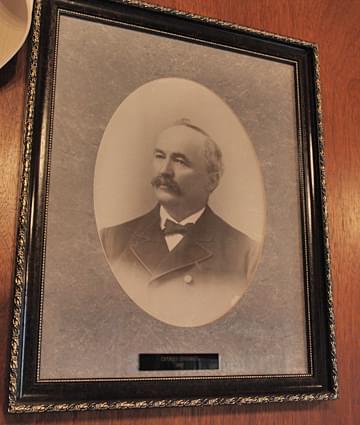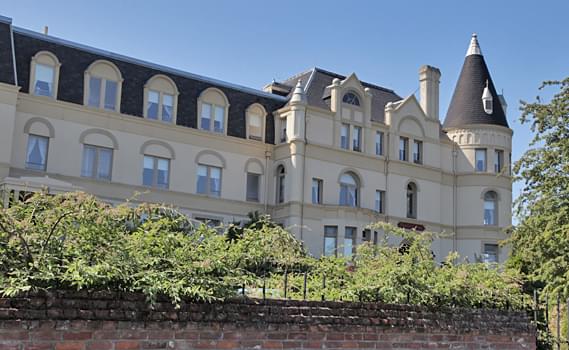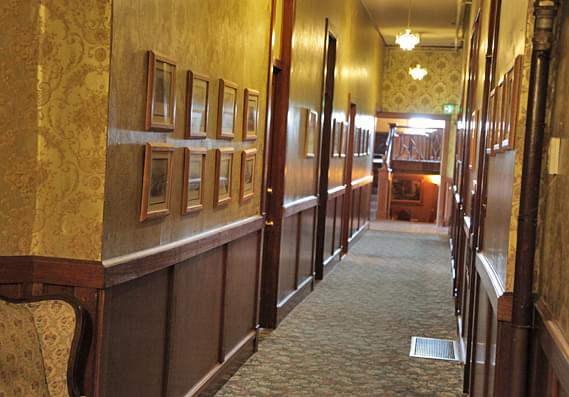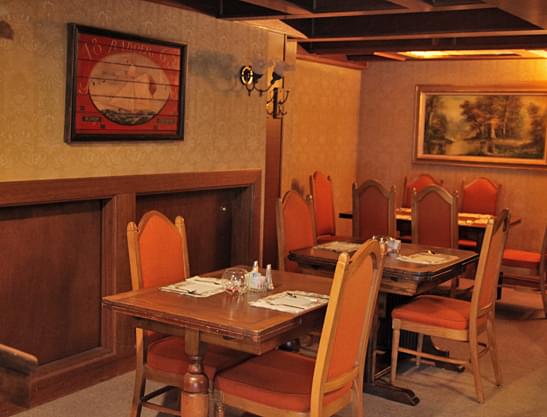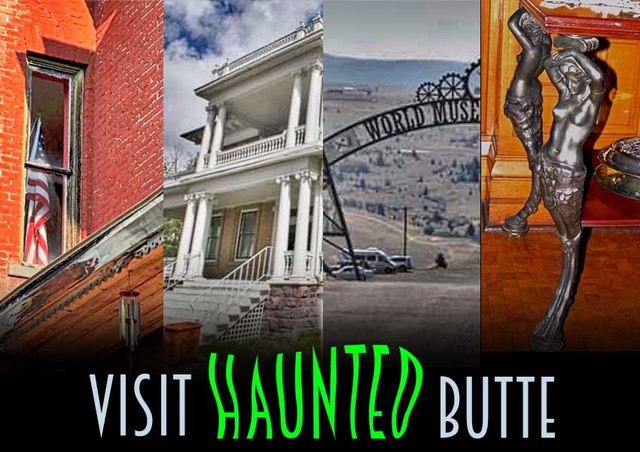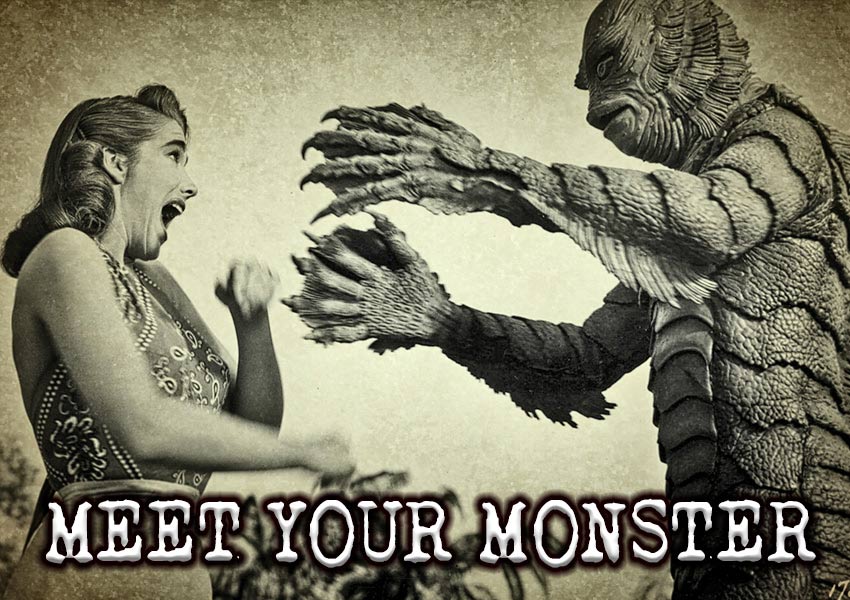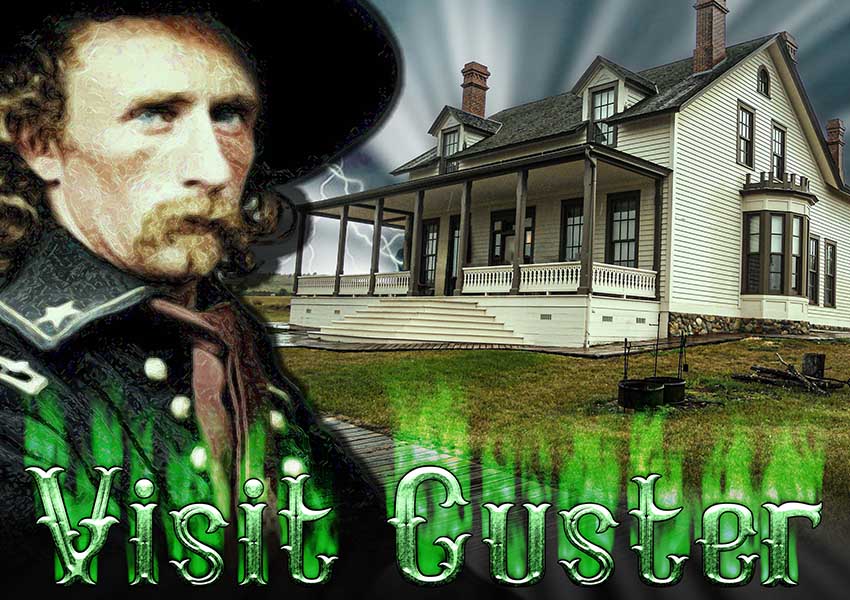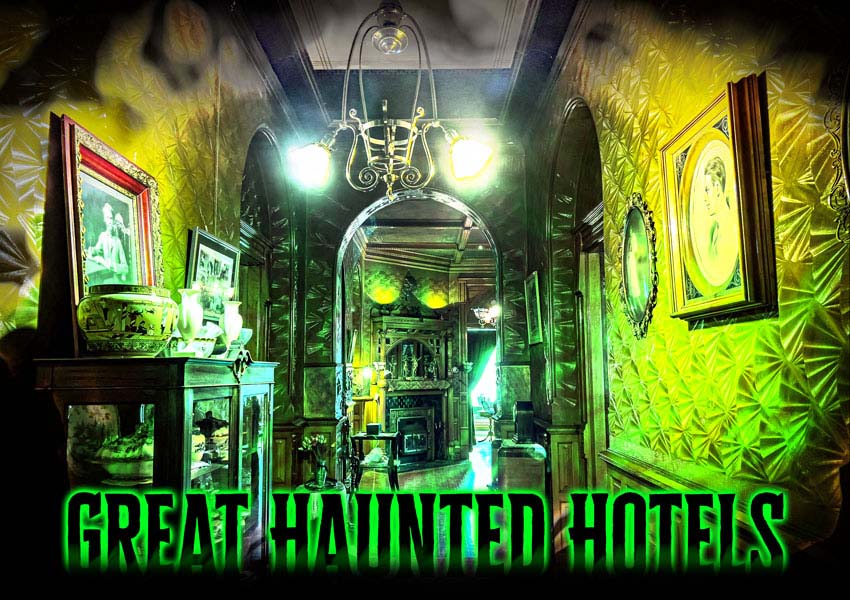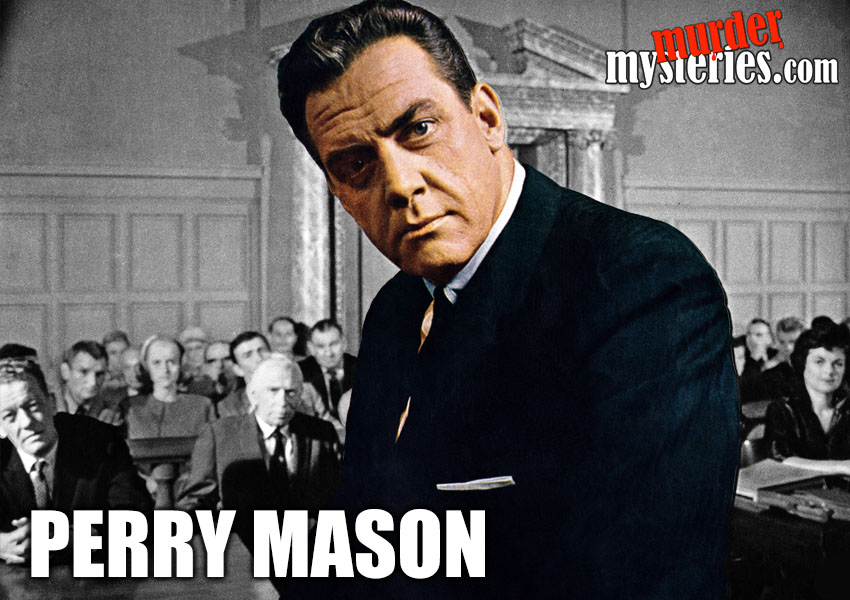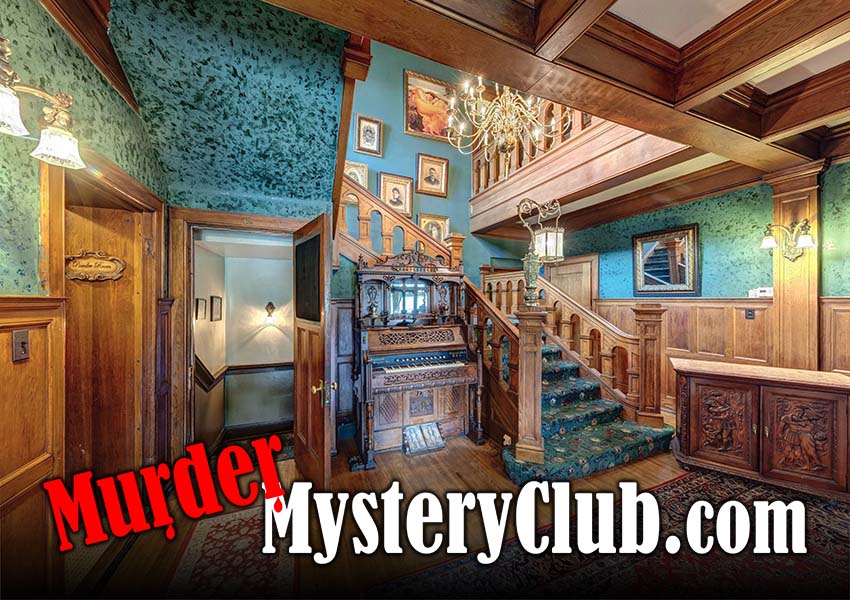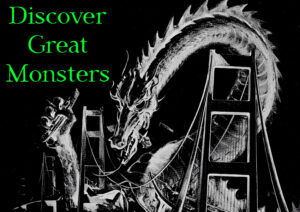Port Townsend Washington
Manresa Castle
There are a boatload of spirits; some are content, and
some are restless from unexpected, unhappy experiences.



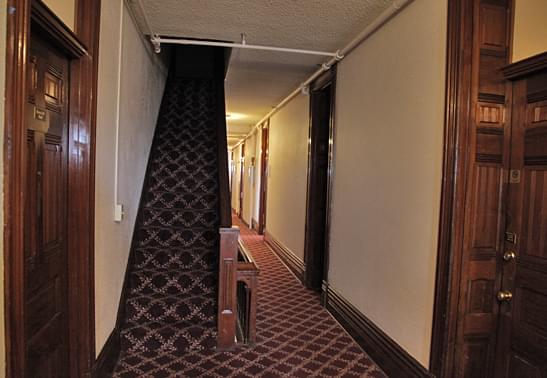
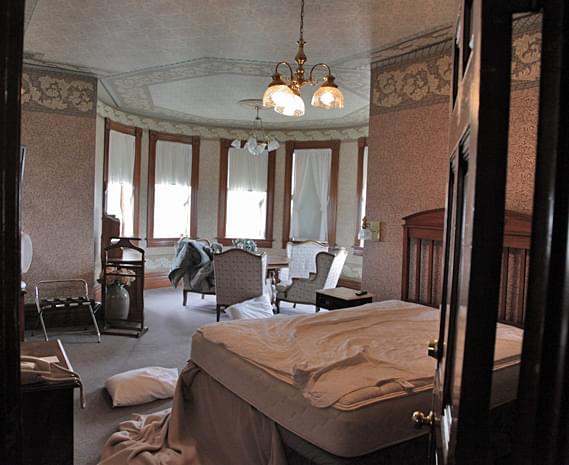
DESCRIPTION
Manresa Castle from the outside sure does resemble a European Castle, complete with towers, turrets, windows, and an aura of respectable old-world culture. It is an immense building that is three storied, and its functionality is well used. It probably takes a boatload of money to keep it up to snuff and heated, so the owners have done a great job putting Manresa Castle to work. The banquet room (formerly the chapel) is used for weddings and special events, they have their own restaurant, and they host retreats for book clubs, knitting events, and many other types of groups that bring people into their lovely hotel.

Coming in from the back parking lot, the visitor steps into the large lobby, with the old chapel area, now a reception/event hall, on the left.
The first floor hall has guest rooms and leads to a cafe/restaurant located on the far right. The second floor has more guest rooms, and the third floor, which has a different feeling to it, also includes rooms and suites. I got the tingly-dizzy feeling I experience when spirits are around.
I loved the oak paneling and all the nice touches of craftsmanship that are visible. I also enjoyed the decor, and loved the fact that they had information sheets about their hotel.
HISTORY
In 1858, a gutsy, progressive entrepreneur, Charles Eisenbeis, immigrated from Prussia, and settled in Port Townsend. He got his first taste of economic success in business by opening up a bakery, that provided supplies of bread and crackers to ships and sailors who stopped at Port Townsend to restock their food stuffs. Business boomed, and with his newly acquired wealth, Charles branched out and invested in other economic opportunities, such as real estate, building new structures in Port Townsend, including banks, a brick foundry and a variety of stores.
As Charles became a mover and a shaker in Port Townsend, helping to create opportunities to grow and thrive, the people elected him to be Mayor, for three terms.
As his business grew so did his family. Charles married his Elisabeth Berhauser in the fun town of San Francisco, in 1865. They had four children, and enjoyed their lives together, until Elisabeth died in 1880.
Charles then married Kate Hughes in 1882, and they also had four children together; creating a huge family of 8 children. Kate did well with this large brood, probably with the help of a nanny/housekeeper.
In 1892, Charles was having temporary cash-flow problems because of the hotel he had just constructed in anticipation of the Port Townsend railroad that was supposed to come to town. This was a business tactic that was generally used in up-and-coming towns, often with great success.
But not this time. The Port Townsend train station was scrapped, and Charles was left with a beautiful hotel but no increased demand for it. Undaunted, he went ahead and constructed his dream castle anyway, inspired by the castles in his native Prussia.
A. S. Whiteway was the designer and builder of Eisenbeis Castle, a three-story, thirty room masterpiece, with walls twelve inches thick. Throughout the castle, hand-crafted woodwork and oak paneling was put in place, and three coal-burning fireplaces kept the rooms toasty warm. Probably more fireplaces were in the castle as well, but many were covered up over the years, and haven’t been found just yet. Eisenbeis Castle’s turrets and towers are very European, giving the structure the aura that Charles was looking for; a pleasant tribute to his home country, Prussia, that he probably missed. The castle not only provided space for his large family, but was the biggest mansion in Port Townsend.
In 1902, Charles died of Bright’s Disease (another name for chronic kidney disease). Kate remarried in 1905, and moved away, leaving just a caretaker living in Eisenbeis Castle, for 20 years. In 1925, a lawyer from Seattle bought the castle, and turned it into a vacation spot for nuns who were teaching in Seattle Catholic schools. It perhaps was an idea that was stifled because of cost and location, for this enterprise flopped.
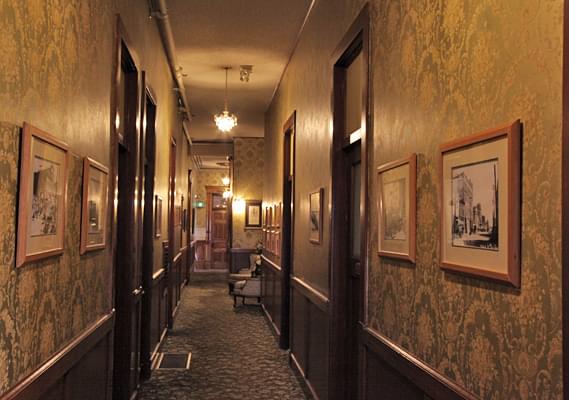
In 1927, Eisenbeis Castle was sold to The Society of Jesus, to be a place to educate Jesuit students. The priests spent their sixteenth and final year of training here studying ascetic theology. Eisenbeis Castle was renamed Manresa Hall, in honor of the birth place in Spain of the founder of their order, Saint Ignatius Loyola.
To make this property suit their needs, the Jesuits made some renovations and some improvements. They installed a $3,400 Otis elevator, which is still working today! Needing a large chapel and more sleeping quarters for their students and faculty, the Jesuits added a South Wing in back of the main building, in 1928, with a stucco exterior. The original structure was also stuccoed, covering up the bricks.
The Jesuits successfully ran the college until 1968, when they moved to another site in Seattle, because it was too expensive to maintain the old building. Manresa Hall was sold to entrepreneurs, who started the long restoration and renovation process, while opening a unique hotel, called Manresa Castle.
Since 1968, three different owners have each done their part to restore and renovate this grand building, much to the appreciation of both its living guests and the spirit people in residence.
HISTORY OF MANIFESTATIONS
There are a variety possibilities regarding who is haunting Manresa Castle. Not everyone agrees on who these spirits could be.
People who love their dream homes sometimes return in their afterlife for a visit or an extended stay.
Manresa Castle was the dream mansion/castle of Charles Eisenbeis and his family, a magnificent place that he only lived in for ten years (1892-1902).
His second wife, Kate, really enjoyed living their life together at Eisenbeis Castle, and loved to entertain with flair the upper crust of Port Townsend Society.
Besides Charles and Kate, others who lived there may also have chosen to visit or stay.
Children and others who have died unexpectedly from accident or illness, sometimes like to stay at their favorite place in this world, especially if family is still living in the home, or perhaps are spending their afterlife or parts of it there, in spirit form.
Lotta Eisenbeis: granddaughter of Charles Eisenbeis.
She died at the age of 13 of a heart infection on March 20th, 1907, in a Seattle hospital. She probably loved her grandparent’s castle. If her grandpa was there in spirit form, she probably wanted to stay with him.
The Entity of Father John Alden Murphy — Probably an instructor at the College:
This was researched by Olympic Peninsula Paranormal Society, who found a 1943 newspaper article that told of his demise from drowning in Puget Sound, though his body was never found. Perhaps it sank to the bottom, and was pulled away by strong currents to the sea. His clothes were neatly folded on the shore, suggesting that he was taking a recreation swim in the water, on September 2nd, 1943, but had some sort of unexpected deadly mishap, perhaps some sort of health issue. His death certificate states that his death was assumed to be accidental. There was no suicide note, and perhaps it was part of his daily or weekly routine to swim in Puget Sound.
The following two well-known and well-reported stories about the English female entity, Kate, and the Jesuit student priest, have been strongly denied by the present management, who claim these stories were made up by a bartender around eight years ago to explain the considerable activity experienced by numerous guests and staff members. I can see this happening, as a means to satisfy all the questions from curious folks.
However, my sources that reported this side of the story, offered by the management, didn’t follow up and ask the name of the bartender, so they could interview this fellow who supposedly made up the ghost stories of woe and tragedy. No hotel wants two suicides attached to their business, or perhaps they wanted to play down the fact that they have some mostly unseen, spirit people guests enjoying their establishment.
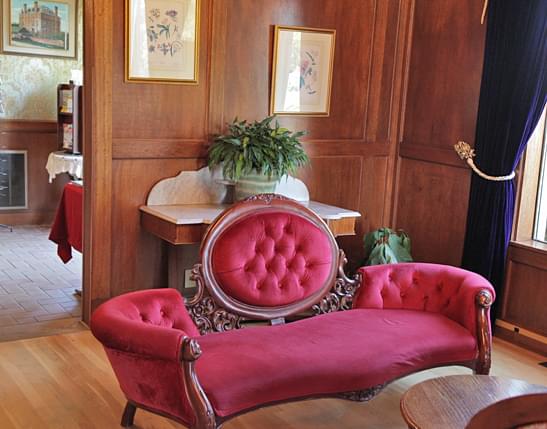
But the stories are somewhat plausible. There are acounts on hauntedhouses.com of women who find themselves pregnant, or just alone, who wind up killing themselves when they feel their beloved has abandoned them, or their beloved is thought to have been killed. Men have also killed themselves over a lost love.
Story Legend 1: As told supposedly by the bartender. The picture of a young woman, thought to be English Kate hung on the wall, as of 2008.
She came and stayed at Manresa Castle, in 1921, to wait for her beloved to return from the sea. Perhaps she was a relative of the caretaker, who stayed at Manresa Castle as the one looking after the place. Disaster struck when her beloved’s ship sank, and it was feared that all had died aboard. In her great distress, she killed herself by jumping out the window in room 306, not able to cope with life without him. However, it was learned afterward that her beloved had survived and had been picked up by a passing boat.
Story Legend 2: Added twists were revealed/confessed to investigator/author Jeff Dwyer by the female spirit, thought to be English Kate herself. Hopefully, she felt some peace in telling what really happened, if this indeed is true.
Because it was such a long time to wait, she became lonely, and got tired of waiting. Kate went out to have a good time, and inadvertently became pregnant. While she was very upset when she heard that her fiancee’s ship had sunk, and mourned for weeks, Kate panicked when she learned that he had actually been saved from the sea by a passing boat, probably at the same time that she realized she was with child. Too ashamed to face her fiancé, she jumped out of the window, killing herself on the sidewalk in front of the castle.
Shame and guilt suffered because of a big sin, and/or being wrongly accused of something, can cause hauntings as well.
Story Legend: A wayward Jesuit Priest in Training. Told by the bartender.
This young Jesuit priest in training who may have had emotional issues, broke the rules of behavior by having “unsupervised visits” with a nun residing in town. When called out on this after he was caught, he probably experienced some scorn, punishment and derision, and a threat of expulsion, causing him to become distraught and unhinged. They may have accused him of having carnal relations, while he just was talking to her as a friend. Or, perhaps he did fall in love with her, and did “have intimate relations” as he was accused of doing. He is said to have hung himself in the attic, from the rafters that support the turret, right above Room 302.
While there is no record of a Jesuit student hanging himself in the attic, this is an event that if it happened would probably be kept quiet, because this would be a terrible black eye on the Jesuit College, Manresa Hall, that one of their own committed a cardinal sin on their watch in their building. Though his death certificate would’ve been a public document, perhaps they just used his civilian name, instead of his church-given name. Port Townsend officials were very sensitive about suicide and the embarrassment of the people left behind.
While there is no record of a Jesuit student hanging himself in the attic, there is a recorded story of another suicide connected to the original Eisenbeis family. People who commit suicide often find that this desperate act doesn’t give them the peace and escape they were expecting. As spirits, they sometimes try to find the peace they didn’t have while alive in a place they know and love.
Charles son, Charles, Jr., killed himself in the basement of the Baker building in Port Townsend, on September 29, 1897. Perhaps his business was failing, or some other tragedy he couldn’t face pushed him over the edge of sanity.
He probably grew up or spent some time in the beloved family castle, and if his father was there, in his afterlife, perhaps Charles joined him there, afraid to continue onto the other side because of his actions.

MANIFESTATIONS
General Activity:
Throughout the castle, the living experience a variety of odd things.
Doors open and close by themselves.
Lights have a mind of their own.
Unexplained puffs of air spurt quickly off the shoulders of people walking down the hallways.
In the Attic:
Guests report hearing footsteps, walking in the space above their guest room, 302.
Sensitives feel an energy presence in the center of the attic.
An EVP of a male voice was caught here, saying “I’M NOT HERE.”
The entire third floor is said to be haunted, active with paranormal activity. It seems to be a favorite area to tease the living for chuckles.
In the Rooms on the Third Floor:
Guests sometimes have their covers pulled off while they sleep.
Room 306:
For a while, a log book was left in the room, for guests to record their experiences. But when future guests read the experiences of others, they asked for a room change, so the log book was removed.
The female Entity of English Kate has been active, or perhaps it is granddaughter Lotta, as some of the behavior listed below suggests a young girl:
Described as having long, flowing dark hair, and wearing a white gown. Perhaps they share the space on different levels of existence.
Her apparition has been seen standing by the window.
This female entity is curious, and likes to look at the guests’ belongings in the dresser and on the floor. She moves them a little, not being too careful to leave them in the same position the owner had put them in, before exiting the room. She is also attracted to shoes.
This female entity also leaves the dresser drawer open.
This female entity likes to sing in the bathroom, in the wee hours of the morning.
She has created good and bad smells in this room, depending on how she likes the people staying there, and what mood she finds herself feeling.
She has been known to sit on the bed, when guests are in it.
In the former Chapel, now a banquet hall for special events:
Perhaps Father Murphy or Charles Eisenbeis isn’t too pleased to see his chapel being used as a dining/event area.
Glasses that have been set up on the tables have been found turned upside down.
Sometimes glasses shatter, even when being held by a living person.
A feeling of being watched closely is sometimes felt by employees.
Sensitives and psychics have felt a strong presence in the old Jesuit Chapel area.
Dining Room:
Entity of Kate Eisenbeis, wife of Charles Eisenbeis, or perhaps one of family’s relatives from Prussia:
A digital photo was taken, possibly of her, sitting in the dining room, in a long, Victorian gown, enjoying the memory of a fabulous event.
A German Relative or employee: PERHAPS the housekeeper or a nanny/nurse
An EVP of a female entity, speaking in German, assuring that everything would be alright was recorded:
This suggests that there could be a female entity from either the Eisenbeis family or Kate’s family.
It could also be a housekeeper (as with the spirits of the Brumder Mansion), a nanny or nurse, hired to help with the children, or Charles Eisenbeis in the last stages of his illness. It would make sense that she would speak German.
STILL HAUNTED?
“A Big Yes Indeed” is in order, though not everyone agrees who exactly is keeping the staff and guests company.
The EVPs caught by Olympic Peninsula Paranormal Society do suggest that the spirits residing here include a woman who can speak German or a foreign language, at least one male of authority; (perhaps the drowned priest, or Charles), a girl named Lotta, a hint at a male who may have killed himself, and a cat!
According to Jeff Dwyer’s book, Ghost Hunter’s Guide to Seattle and Puget Sound, the English female entity, Kate, is also a resident spirit, and she may well be responsible for one of the EVPs caught by Olympic Peninsula Paranormal Society, though no one knows for sure.
Many guests and staff members have experienced a variety of paranormal activity, so much so that the known “haunted rooms” had their own ghost journals for people to share their experiences.
In one of my sources, a small group of amateur investigators claimed that they had made contact with a male spirit in the attic through a Ouija Board. The responses they got back suggested that this entity did kill himself, because of an inner weakness or evil side. He answered using a Bible verse, suggesting that this could be the student priest, or even Charles, Jr., who may have been well-read, and probably brought up in the Christian religion. Information from Ouija Boards isn’t very scientific, but it is interesting.
AGHOST investigation group had a sensitive who felt a strong presence in the chapel area, and some chanting as well.
She also felt a strong energy in the middle of room 302.
They left a camera running in the attic, and caught an orb flying right at the camera. Investigator and author Jeff Dyer was treated to the full sports package of paranormal activity when he deliberately provoked the female spirit he called, “Kate,” getting her very angry. He reported all that he experienced in his book, Ghost Hunter’s Guide to Seattle and Puget Sound.
Jeff also digitally caught the image of a stately woman, perhaps Kate Eisenbeis, wearing a formal evening gown, sitting at a table in the dining room. This was perhaps residual energy, or it could be the intelligent spirit of Kate, or one of the other family members.
The Olympic Peninsula Paranormal Society did their due diligence in their focused, professional investigation, conducted in January of 2010, and they hit pay dirt. “In total, we had 7 DVR cameras running from 5pm until about 6am, total of over 2000 photos and multiple audio recorders running all night long. We had 51 EVP/EAPs, a couple of personal experiences and some video.”
All their hard work paid off, and they have been successful in capturing hard evidence of entities who are visiting or staying at Manresa Castle. The Olympic Peninsula Paranormal Society has posted on their website their captured EVPs, that suggest the presence of intelligent entities, as well as some interesting photos and videos.
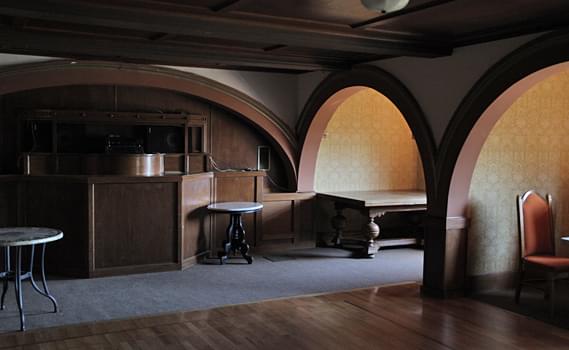
LOCATION
651 Cleveland Street
PO Box 564
Port Townsend, Washington 98368
Manresa Castle is located at 7th and Cleveland, close to the intersection of 7th and Sheridan, where it sits on a bluff overlooking a wonderful view of Puget Sound.
SOURCES INCLUDE
- The Ghost Hunter’s Field Guide
by Rich Newman
Llewellyn Publications – 2011 - Ghost Hunter’s Guide to Seattle and Puget Sound
By Jeff Dwyer
Pelican Publishing Co. – 2008 - Ghost Stories of Washington
By Barbara Smith
Lone Pine Publishing – 2000 - AGHOST Investigation Group – Investigation of Manresa Castle
- Investigation of Manresa Castle by Olympic Peninsula Paranormal Society
- Evidence page of Investigation of Manresa Castle by Olympic Peninsula Paranormal Society
- Information made available by Manresa Castle
Our Haunted Paranormal Stories are Written by Julie Carr
Our Photos are copyrighted by Tom Carr
Visit the memorable… Milwaukee Haunted Hotel
Your Paranormal Road Trip
